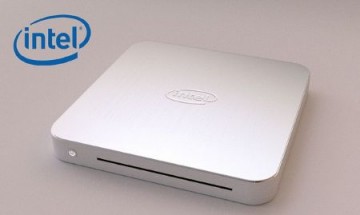 Intel is slowly expanding the distribution of its Next Unit of Computing (NuC) product which first appeared last year.
Intel is slowly expanding the distribution of its Next Unit of Computing (NuC) product which first appeared last year.
NUC is essentially a box with a motherboard inside and is designed for resellers who want to create highly customised machine builds for everything from home PCs to digital signage.
There are four basic SKUs built around the Core i3 processor inside a 4” x 4” x 2” box.
Lately Intel dumped them into its New Zealand channel which is tiny in comparison to the UK, but is an indication of how seriously the company is taking the product. Nearly 1,000 of its reseller partners have been hit to sign up to NUC.
The message that Intel wants to send is that NUC is here to stay and the outfit has an impressive roadmap for the programme. We should see Core i5 and Core i7 processor based NUCs coming out later in 2013, and better modulations for different customer segments.
This means that resellers can package them in the business segment or the consumer segment and badge them accordingly.
A basic unit ships for US$319, and includes Thunderbolt, HDMI and USB ports and options for other processors reported coming out in other markets, which will ship at a lower cost.
From Intel’s perspective this is a clever product which effectively locks in resellers to a standard pattern which it controls. From the resellers’ point of view it makes for a much easier assembly particularly for those at the low and medium end of the market. It also shuts out those motherboard makers who are not key Intel partners.
But there are obvious downsides. Companies will have to start emphasising more nebulous differences like customer service or repairs as a way of hooking customers.
Commodisation of products means that resellers have less ability to swap parts to differentiate their products and any reconfiguration will be a specialised business.
It will require specially trained sales teams who listen to what customers want rather than try and sell them the same sort of box their rivals will be trying to flog them. To do this a sales person will actually need to understand a customer’s business and carry out a lot more detailed site work.
Intel is becoming more interested in the commoditisation of its products. In fact, there is talk of further merging of graphics and CPU chips which has the advantage, for Intel, of making it uneconomic to buy a rival’s graphics card.
This will lead many resellers wondering if it is worthwhile staying an Intel partner, as they can instantly differentiate themselves by going to AMD, or even ARM, combinations.





